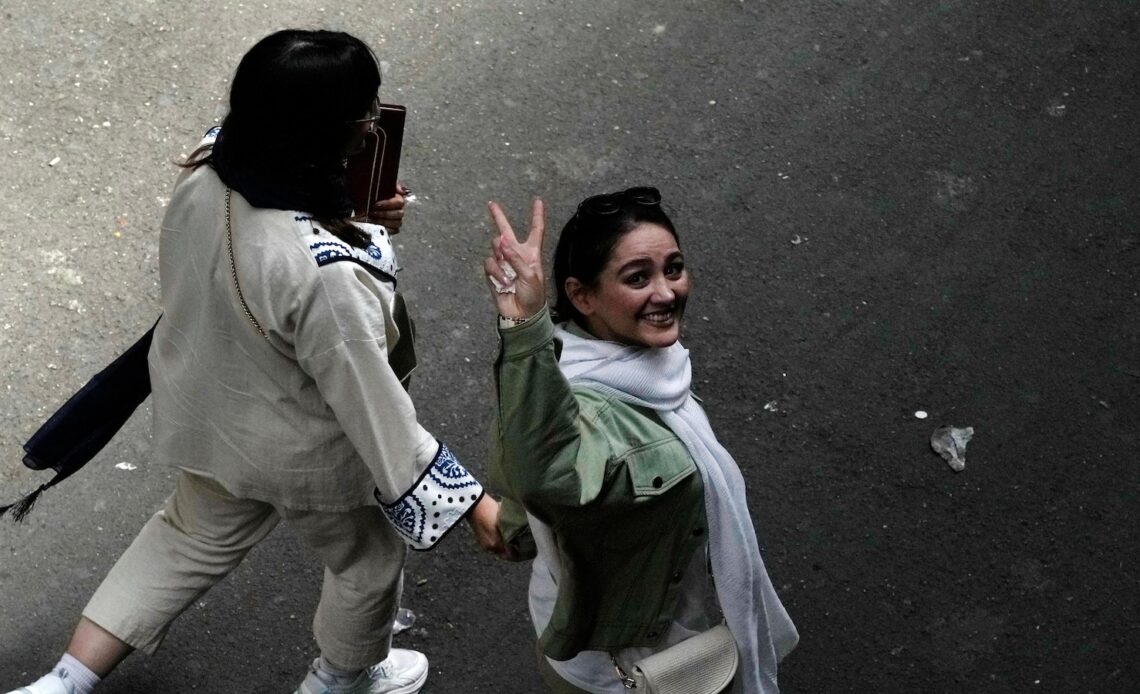DUBAI, United Arab Emirates — On the streets of Iranian cities, it’s becoming more common to see a woman passing by without a mandatory headscarf, or hijab, as the second anniversary of the death of Mahsa Amini and the mass protests it sparked approaches.
There’s no government official or study acknowledging the phenomenon, which began as Iran entered its hot summer months and power cuts in its overburdened electrical system became common. But across social media, videos of people filming neighborhood streets or just talking about a normal day in their life, women and girls can be seen walking past with their long hair out over their shoulders, particularly after sunset.
This defiance comes despite what United Nations investigators describe as “expanded repressive measures and policies” by Iran’s theocracy to punish them — though there’s been no recent catalyzing event like Amini’s death to galvanize demonstrators.
The country’s new reformist President Masoud Pezeshkian campaigned on a promise to halt the harassment of women by morality police. But the country’s ultimate authority remains the 85-year-old Supreme Leader Ayatollah Ali Khamenei, who in the past said “unveiling is both religiously forbidden and politically forbidden.”
For some observant Muslim women, the head covering is a sign of piety before God and modesty in front of men outside their families. In Iran, the hijab — and the all-encompassing black chador worn by some — has long been a political symbol as well.
“Meaningful institutional changes and accountability for gross human rights violations and crimes under international law, and crimes against humanity, remains elusive for victims and survivors, especially for women and children,” warned a U.N. fact-finding mission on Iran on Friday.
Amini, 22, died on Sept. 16, 2022, in a hospital after her arrest by the country’s morality police over allegedly not wearing her hijab to the liking of the authorities. The protests that followed Amini’s death started first with the chant “Women, Life, Freedom.” However, the protesters’ cries soon grew into open calls of revolt against Khamenei.
A monthslong security crackdown that followed killed more than 500 people and saw over 22,000 detained.
Today, passersby on the streets of Tehran, whether its tony northern suburbs for the wealthy or the working-class neighborhoods of the capital’s southern reaches, now routinely see women without the hijab. It particularly starts at…
Click Here to Read the Full Original Article at ABC News: International…

